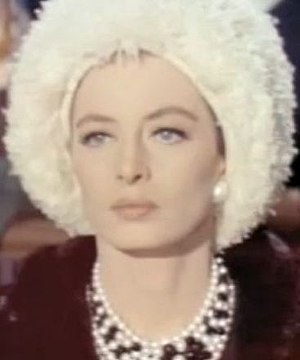
North to Alaska is on TV again and once more there is the lovely Capucine. For me, when I was growing up, she the epitomized all that was French and all that one aspired to be in terms of looks and grace.
Capucine was a Golden Globe-nominated French actress and fashion model best known for her role as Simone Clouseau in the 1963 comedy The Pink Panther and as Michelle "Angel" in North to Alaska.
Born Germaine Lefebvre in Saint-Raphaël, in the South of France, Cpucine soon exhibited an independent, non-conformist personality.
She attended school in France and received a B.A. in foreign languages. At 17, while riding in a carriage in Paris, a commercial photographer noticed her. Her elegance and sophistication soon brought her to the attention of modeling agencies where she became a regular fashion model for such fashion houses as Givenchy.
Capucine was great friends with Audrey Hepburn, the two having met while modelling in the 40s. They shared an apartment together at the time and Capucine was later a witness to the 1969 wedding of Hepburn to Dr.Andrea Dotti in Lausanne, Switzerland.
A manic-depressive, Capucine's life had on several occasions been saved by Hepburn (both women lived at the time in Switzerland) after repeated suicide attempts.
In 1949, Capucine made her film debut in the French film Rendez-vous de Juillet. On the set of Rendez-vous, she met Pierre Trabaud. The two married the following year. The marriage lasted only six months, and Capucine would never marry again. In 1957, film producer Charles K. Feldman spotted Capucine while modeling in New York City. Feldman brought her to Hollywood to learn English and to study acting under Gregory Ratoff. She was signed to a contract with Columbia Pictures in 1958 and landed her first English-speaking role in the filmSong Without End (1960) Starring opposite Dirk Bogarde. For the next few years, Capucine would go on to make six more major motion pictures before moving to Switzerland in 1962. She continued making films in Europe until her death.
Her best known films include: Curse of the Pink Panther (1983), Trail of the Pink Panther (1982), Red Sun (1971), Fellini Satyricon (1969), What's New, Pussycat (1965), The 7th Dawn, (1964), The Pink Panther,(1963), The Lion,(1962), Walk on the Wild Side (1962), North to Alaska (1960) with John Wayne.
She also appeared on American television in the 80s in episodes of "Murder, She Wrote" and alongside old friend Robert Wagner in "Hart to Hart".
Capucine suffered from bipolar disorder throughout her life and sadly in 1990 she finally succeeded by jumping to her death from her eighth-floor apartment in Lausanne, Switzerland.
Born 6 January 1931, Saumur, Loire,( or Toulon,) France
Died 17 March 1990, Lausanne, Switzerland
Here is a small tribute with a song from Kylie:

Comments
Post a Comment